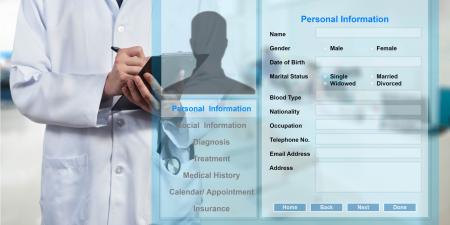In a sweeping overhaul of the nation’s health care delivery system, the 111th Congress recently passed the Patient Protection and Affordable Care Act (Affordable Care Act) and the Health Information Technology for Economic and Clinical Health Act (HITECH). Health information technology (IT) serves as a foundation within these reforms to improve quality, reduce costs, and increase access to care. President Obama has stated his deep commitment to the improved health of America and to this end has set an ambitious goal for every American to benefit from an electronic health records (EHRs) by 2014. Here are the highlights:
Enhanced Clinical Care and Quality Improvement
HITECH allocates $27 billion in incentives to support adoption and “meaningful use” of electronic health records (EHRs) by eligible professionals and hospitals. In July 2010, the Centers for Medicare and Medicaid Services (CMS) released the Phase 1 framework defining criteria for “meaningful use” that must be met if an EHR user is to earn incentive payments. The standards consist of 15 core data points and 10 menu options, out of which users must choose five. Standards include medication lists and automated drug-allergy interaction checks to ensure patient safety. In the interest of population health, the framework institutes syndromic surveillance to notify public health officials of reportable conditions. Overall, the goal of the “meaningful use” framework is to enhance clinical care and quality by empowering medical caregivers with information that is both instantaneous and patient-specific.
Those who meet these goals and become “meaningful users” can be rewarded by the government with $44,000 in Medicare and $63,750 in Medicaid payments. The government’s investment is a once-in-a-lifetime possibility no eligible physician group, hospital, or other medical care organization should pass up.
Health IT Web
The ultimate goal of health IT is a national, interoperable, private, and secure electronic system within which information is exchanged among all the sites where patients receive care. The Nationwide Health Information Network (NHIN) and the State Health Information Exchange Cooperative Agreement were allocated funds totaling more than $600 million to create a common platform for health information exchange. In its nascent stage, the NHIN is already being integrated into the operations of provider organizations such as Kaiser Permanente, the Cleveland Clinic, and the Veterans Administration.
Results of mammograms, colonoscopies, and blood work will be shared electronically among specialists and primary care physicians to ensure safe monitoring of disease. No longer will results rely upon the mail and office administrators’ placing of paperwork in the paper chart, but will be sent automatically to the proper EHRs. To assure the security and privacy of a patient’s health record and protect against the unlawful distribution of patient information, the legislation also established chief privacy officers.
Reducing Costs
Adoption of EHR affords a unique opportunity to reduce cost—a primary goal of health reform. Because information seamlessly follows the patient, redundant tests and imaging are avoided. Some early adopters of EHRs, like Partners Health Care in Boston, are providing point-of-care decision support already as doctors prescribe tests, medications, and imaging requisitions.
Health IT facilitates the creation of innovative cost-saving programs. “Shared savings” or gain-sharing allows hospitals and other care providers to collaborate to reach quality metrics. EHRs serve an integral role by enabling users to measure desired outcomes and report this data more readily. The Affordable Care Act requires the Secretary of Health and Human Services to establish payment bundling options to complement the current payment-by-procedure option. Bundling options reward coordinated care during hospitalizations as reported by EHRs. These initiatives merely cover the surface of the range of programs that will promote system-wide reductions in cost in a patient-centered manner.
Catalyzing the Transformation: Training and Implementation
Health IT is challenging work. The addition of IT to our health care system should not be viewed as merely a technological upgrade, but rather a fundamental change in our approach to the practice of medicine. The precise role of health IT will evolve over time, but from now on it will serve the professional competency of a doctor as integrally as a stethoscope.
The federal government recognizes the difficulty of implementing health IT and has made significant investments to facilitate this process. It has supported new funding for regional extension centers (REC) to reach out to more than 100,000 primary care physicians across the United States with advice and technical assistance with the purchase of medical record systems. The Beacon Community program granted fifteen communities $250 million to demonstrate how EHRs can achieve breakthrough improvements in care. Lessons learned from these leading examples will be transferred to communities across the nation.
There is a national shortage of health IT professionals who can aide clinicians and hospitals in achieving meaningful use. To meet the growing demand for health IT professionals, the Workforce Training Programs ($118 million) support the education of up to 45,000 new workers with funds directed toward curriculum development, community college programs, and competency examinations. Additional programs improve health information exchange and the security and privacy of health information and address other impediments to the adoption of novel health IT systems.
This constellation of initiatives moves us closer to President Obama’s stated goal of an EHR for every American by 2014. Health IT is the critical component the health care community must embrace as we work together to deliver the highest quality of care to Americans in the 21st century.



